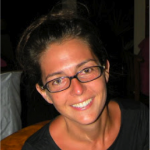Link to Pubmed [PMID] – 30022130
Link to DOI – 10.1038/s41598-018-29235-7
Sci Rep 2018 Jul; 8(1): 10889
Plasmacytoid dendritic cells (pDCs) are specialized in the production of interferons (IFNs) in response to viral infections. The Flaviviridae family comprises enveloped RNA viruses such as Hepatitis C virus (HCV) and Dengue virus (DENV). Cell-free flaviviridae virions poorly stimulate pDCs to produce IFN. By contrast, cells infected with HCV and DENV potently stimulate pDCs via short-range delivery of viral RNAs, which are either packaged within immature virions or secreted exosomes. We report that cells infected with Yellow fever virus (YFV), the prototypical flavivirus, stimulated pDCs to produce IFNs in a TLR7- and cell contact- dependent manner. Such stimulation was unaffected by the presence of YFV neutralizing antibodies. As reported for DENV, cells producing immature YFV particles were more potent at stimulating pDCs than cells releasing mature virions. Additionally, cells replicating a release-deficient YFV mutant or a YFV subgenomic RNA lacking structural protein-coding sequences participated in pDC stimulation. Thus, viral RNAs produced by YFV-infected cells reach pDCs via at least two mechanisms: within immature particles and as capsid-free RNAs. Our work highlights the ability of pDCs to respond to a variety of viral RNA-laden carriers generated from infected cells.






